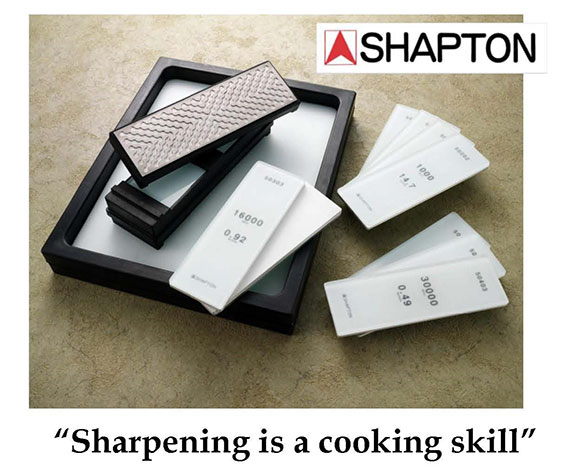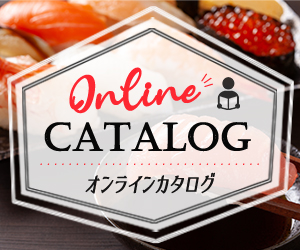About Us
Cherry Company’s Philosophy for 2016 "To accomplish both physical, and moral support for our clients, and employees" To accomplish our goal, we will clarify our objectives so we may maximize gross revenues, and minimize our excess spending. By meeting our objectives of optimizing valued company assets, we would like to make a contribution ...


Show Room
Our show room displays Japanese restaurant equipment, Ceramic ware, Porcelain ware, Chef Knives, Uniforms, Chopsticks, Disposable container, Various Japanese food items, Sake, Shochu and Beer…. Ideal merchandise for the Japanese Restaurant Industry. Please feel free to visit our show room during business hours. [gallery]


Food & Beverages
Japanese food has made a strong influence in the US market over the past 10 years. After WW2, Japanese food has become more popular in the US restaurants scene. Tempura and sushi has already become a household name and now we have ramen and even okonomiyaki making a strong influence ...


Japanese Sake
HISTORY OF SAKE There are multiple theories on how sake was developed in Japan, but one theory suggests that sake production started soon after the arrival of rice cultivation in the third century B.C. In ancient Japan, the Imperial court and large religious institutions controlled the sake production, and ...


Shochu
What is Shochu? Shochu is a distilled spirit, that is native to Japan. Shochu can be made from several different ingredients that gives each shochu a distinctive flavor and aroma. Shochu started in the southern parts of Japan and slowly made its way up north. Now in recent years Shochu sales ...


Japanese Sake & Food Distributer | The Cherry Company
NAMIHANA
- 2013-11-15 (Fri)
- New Items | Promotional Products
波 花
*NAMIHANA*
Hawaii’s Nature and Fresh Produce
+
Japan’s Traditional Craftsmanship
||
The Best of Two Worlds
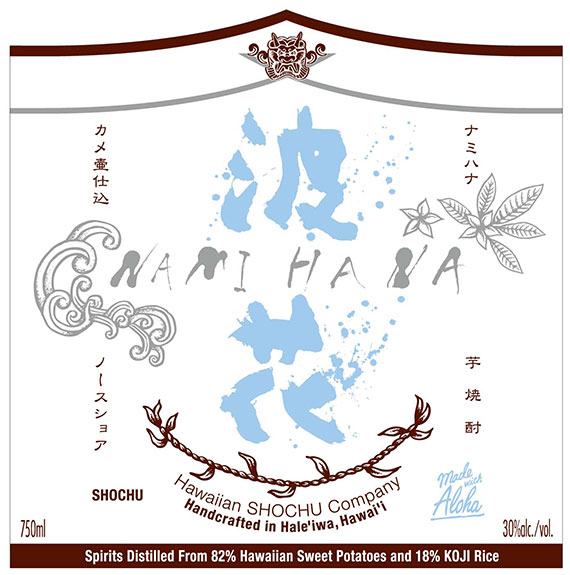
NAMIHANA is a distilled spirits made with Hawaii’s beautiful nature and Japan’s traditional craftsmanship. NAMIHANA is a premium Hawaiian IMO (sweet potato) SHOCHU (traditional distilled spirits from Japan) brewed, distilled, and bottled in Haleiwa, Hawaii.
Japan’s Traditional Handcraft Techniques
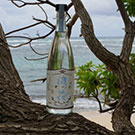 NAMIHANA is created with the traditional handcraft techniques of “KUROSE Brew Masters” of Kagoshima, Japan. The rice is steamed in a wooden steamer called KOSHIKI, then it is cultured to make KOJI-rice.
NAMIHANA is created with the traditional handcraft techniques of “KUROSE Brew Masters” of Kagoshima, Japan. The rice is steamed in a wooden steamer called KOSHIKI, then it is cultured to make KOJI-rice.
The mash of KOJI-rice and steamed sweet potatoes is slowly and naturally fermented in the century-old ceramic vats called KAMETSUBO. NAMIHANA is distilled only one time with the traditional wooden still called KIDARU.
Why Hawaii?
Hawaii’s year-round warm climate is similar to Kagoshima’s fall season when IMO SHOCHU is produced. The soil condition greatly influenced by the volcanic activity is ideal to grow quality sweet potatoes. Also, the sweet potatoes are considered as Hawaii’s traditional crops. There are over twenty varieties of sweet potatoes grown in Hawaii. Hawaii is the ideal place to make the IMO SHOCHU.
ARIGATO, Hawaii!!
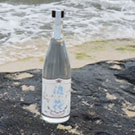 Hawaii is what makes good quality IMO SHOCHU. All the element of Hawaii such as the air, water, soil, Hawaiian grown sweet potatoes, and even things you cannot see or feel are the reasons which make great IMO SHOCHU in Hawaii. We would like the people in Hawaii to know that Hawaii makes such fine SHOCHU and to join us in being proud of what Hawaii can do. ARIGATO, Hawaii!!
Hawaii is what makes good quality IMO SHOCHU. All the element of Hawaii such as the air, water, soil, Hawaiian grown sweet potatoes, and even things you cannot see or feel are the reasons which make great IMO SHOCHU in Hawaii. We would like the people in Hawaii to know that Hawaii makes such fine SHOCHU and to join us in being proud of what Hawaii can do. ARIGATO, Hawaii!!
Distiller’s Profile: Ken served his apprenticeship under Master Manzen at Manzen Shuzo Co. in Kagoshima, Japan. Manzen Shuzo Co. is a well-known for their traditionally handcrafted premium IMO SHOCHU. Ken was able to learn the techniques of “KUROSE Brew Masters” from Master Manzen. Ken and his wife Yumiko started their small distillery in Haleiwa, Hawaii in 2013.
- Comments (Close): 0
- Trackbacks (Close): 0
Sake or Shochu
- 2013-11-15 (Fri)
- New Items

SHOCHU (show-choo) is a traditional distilled spirits native to Japan. SHOCHU can be made with variety of ingredients such as rice, barley, sweet potatoes, sugar cane, fruits, and more.
Sake or Shochu
Today Japanese people consume more SHOCHU than SAKE. Among a variety of SHOCHU produced and consumed in Japan, the sweet potato SHOCHU is the most popular SHOCHU.
Distilled or Brewed
SHOCHU is a distilled spirits while SAKE is a brewed alcohol beverage. If you distill SAKE, it becomes rice SHOCHU (technically speaking). Beer is brewed alcoholic beverage made from barley (malted barley), if you distill beer, it becomes something like whiskey. If you distill wine, it becomes brandy.
KOJI: Japan’s National Micro-Organism
To be called SHOCHU under the Japanese liquor law, KOJI has to be used. KOJI is a micro-organism widely used for a variety of fermented food in Japan. SHOYU (soy sauce), MISO, SAKE, and many Japanese food you love cannot be made without KOJI. Even in sweet potato SHOCHU, approximately 20% of the ingredients is KOJI rice (cultured rice by using KOJI). KOJI is very important element in SHOCHU making.
Authenticity
We apply Japan’s traditional handcrafted techniques to make SHOCHU in Haleiwa. The equipment and tools we use are also traditional. Even in Japan, there are only a small number of distilleries which make SHOCHU like us.
ARIGATO, Hawaii!!
The IMO (sweet potato) SHOCHU distilled in our KURA (“distillery” in Japanese) in Haleiwa turned out to be one of the finest SHOCHU I have ever tasted. Being a Japanese, it is not proper to highly compliment your own product, so please forgive me. I believe that Hawaii is the reason that our IMO SHOCHU is so superb. The Hawaiian IMO (sweet potatoes), climate, and spirit is what makes such a great IMO SHOCHU, NOT us…
I still keep on wondering what makes the Hawaiian SHOCHU such high grade. IMO SHOCHU is mainly produced during the fall season in Kagoshima, Japan. Located in Southern tip of Kyushu Island, Kagoshima’s climate is warmer than other parts of Japan (except Okinawa). Four years of living in Kagoshima made me realize the similarities of Kagoshima’s fall and Hawaii’s year-round climate; highs of 80 degrees and lows around 68 with moderate humidity. Also, Kagoshima is known for the volcanic soil condition called SHIRASU. Sakurajima is an active volcano located only a few miles away from Kagoshima city where more than 600,000 people live. Under the similar climate and soil conditions, both Kagoshima and Hawaii produce a large number of sweet potatoes.
We had hopeful expectations when we did the first distillation. Even though the KOJI and mash looked pretty good, you can never predict the outcome until you actually distill the SHOCHU. When the first distillation day came, we were all nervous with anticipation.
When I tasted the very first drop of IMO SHOCHU from our wooden-still, I thought there was something wrong with my tongue. I was thinking to myself, “This is not bad.” Then, after the second sip, “This is great, but why?” Before I got all excited about the result, I started to wonder why we were able to make such good quality SHOCHU.
We have come to the conclusion that Hawaii is what makes good quality SHOCHU. All the element of Hawaii such as the air, water, soil, Hawaiian grown sweet potatoes, and even things you cannot see or feel are the reasons which make great SHOCHU in Hawaii. We would like the people in Hawaii to know that Hawaii makes such fine SHOCHU and to join us in being proud of what Hawaii can do.
Hawaii’s nature and farm produce + Japan’s traditional techniques = The Best of Two Worlds.
KAMPAI!!
- Comments (Close): 0
- Trackbacks (Close): 0
Shapton 15% OFF
- 2013-10-25 (Fri)
- Promotional Products
15%OFF-Shapton, Sharpening is a cooking skill
What is SHAPTON?
Shapton has a group of engineers who are constantly tyring to improve theire products. They focus on the smallest deyails like the chamfers around the edges of stones, as well as the design, and most importantly,,,,,,,,,,,,Continue Reading
- Comments (Close): 0
- Trackbacks (Close): 0
